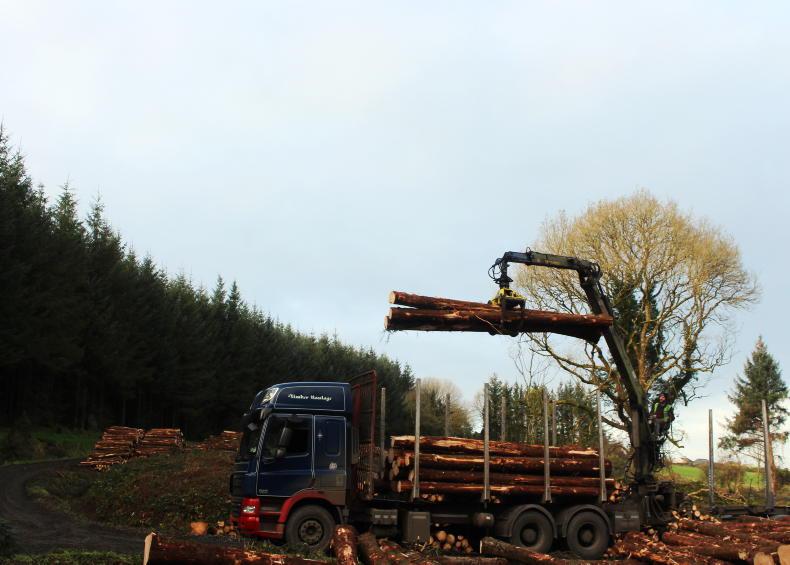Global timber markets experienced extreme volatility in 2022, due to disruptions from the Russian invasion of Ukraine, an outbreak of spruce bark beetle in central European forests and delays in supply chain recovery after the Covid-19 pandemic.
In 2021, nearly 10% of the sawn softwood consumed in Europe originated from Russia, Belarus and Ukraine.
Despite restricted supply in the EU, Irish timber prices began to decline from quarter two, which continued throughout last year. The decrease was a result of lower demand and construction output, partly due to economic uncertainty and a decline in consumer confidence due to rising inflation and the cost of living.
The largest decrease was in sawlog with prices in the final quarter of 2022 ranging from €80 to €90 per tonne, down 28% compared to prices quoted in January 2022 (Figure 1).
Pulpwood prices fell from around €39 to €33/ t (Figure 2) while stakewood prices declined from €46 to €37/t (Figure 3). Palletwood prices dropped from €75 to €62/t for 3.7m lengths while prices were stable for small lengths.
Many farmers who were waiting to get a felling licence and were unable to take advantage of the high prices in 2021 and early 2022 have decided to delay clearfell operations, hoping the sawlog prices will recover.
Outlook for 2023 and beyond
Uncertain market conditions are expected to continue in 2023, although initial indications are that the downward spiral has eased with farmers reporting increased prices in January and February, especially for pulpwood.
The European timber market continues to face the twin challenges of depressed demand and high costs due to increasing energy prices and higher interest rates.
However, with gas and electricity prices skyrocketing, many Irish homes turned to firewood this winter as an alternative heat source, leading to increased prices for firewood.
The rising energy costs also mean that timber retains a competitive advantage in the construction sector, as it is a relatively low energy product compared to high energy and carbon-intensive materials such as cement and steel.
With rising demand for timber set to continue and lower European supply, the importance of Ireland’s domestic timber supply will become increasingly important, particularly when Ireland’s Housing for All strategy is addressed, and the role Irish softwood timber could contribute to the stated objective to build 33,000 homes each year between 2021 and 2030.
Timber-framed housing should be the answer to the construction industry’s housing shortage and carbon footprint issues in Ireland, especially considering that the building materials used in the timber house produced a saving of 124.1kg CO2e/m², 41% less carbon than the masonry construction materials.
Price visibility
The prices quoted in the IFA Farm Forestry Timber Market reports are sourced from forest owners, forestry companies and sawmills. The quarterly market reports show a large variation in the prices quoted to farmers. This illustrates the importance to get several quotes before agreeing a sales contract.
The volatility in the market over the last year shows the importance of farmers familiarising themselves with the market in advance of selling.
Years of growth and value are accumulated in a single transaction, so it is vital that farmers take the time to understand the quality and quantity of the timber in their forest and the market before agreeing a price and selling their timber.






 This is a subscriber-only article
This is a subscriber-only article











SHARING OPTIONS: